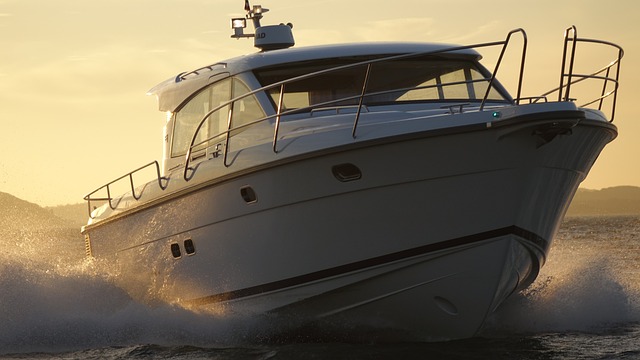Discover How Electric Boats Are Changing the Way We Travel on Water
Electric boats are bringing a new way to enjoy rivers, lakes, and oceans. They move quietly and use clean electric power instead of gas engines. People around the world are starting to explore how these boats work, how they charge, and what makes them glide smoothly across the water. It’s a fun and modern twist on boating that mixes new ideas with the joy of being outdoors.

Electric-powered watercraft have moved from experimental novelty to practical reality in recent years, driven by advances in battery technology, environmental regulations, and growing consumer demand for sustainable alternatives. These vessels operate using electric motors powered by rechargeable batteries, eliminating the need for fossil fuels and dramatically reducing noise pollution and emissions. The transition mirrors the automotive industry’s shift toward electric vehicles, but with unique challenges and opportunities specific to marine environments.
What Makes Electric Boat Technology Different?
Electric boat technology relies on lithium-ion battery systems similar to those found in electric cars, but marine applications require specialized waterproofing, cooling systems, and energy management software. The motors themselves are remarkably efficient, converting over 90 percent of electrical energy into mechanical power compared to roughly 30 percent for traditional combustion engines. This efficiency translates into longer operating ranges and lower energy costs over time. Modern electric boats feature regenerative systems that can recapture energy during deceleration, further extending their range. The absence of complex transmission systems also means fewer moving parts, which reduces maintenance requirements and increases reliability.
How Eco-Friendly Boating Benefits Our Waterways
The environmental advantages of eco-friendly boating extend beyond zero emissions at the point of use. Electric boats eliminate oil and fuel spills that contaminate water and harm aquatic ecosystems. The dramatic reduction in underwater noise pollution benefits marine life, particularly species that rely on echolocation and acoustic communication. Studies have shown that traditional boat engines can disrupt feeding patterns, migration routes, and breeding behaviors in fish and marine mammals. Electric propulsion systems operate almost silently, allowing wildlife to thrive in areas previously disturbed by constant engine noise. Additionally, as electrical grids incorporate more renewable energy sources, the overall carbon footprint of charging electric boats continues to decrease.
What Modern Boating Innovations Are Available Today?
Modern boating innovations in the electric sector span multiple vessel types and applications. Small recreational boats and kayaks with electric trolling motors have been available for years, but recent developments include high-performance speedboats, luxury yachts, and commercial ferries. Modular battery systems allow owners to customize their range and power requirements based on specific needs. Smart control systems integrate GPS navigation, battery management, and performance optimization into user-friendly interfaces accessible via smartphone apps. Solar panel integration on larger vessels provides supplemental charging capability, extending range and reducing dependence on shore power. Some manufacturers are experimenting with hydrogen fuel cells as range extenders, combining the benefits of electric propulsion with longer operating distances.
Who Is Adopting Electric-Powered Watercraft?
Electric-powered watercraft adoption is accelerating across multiple sectors. Municipal governments in coastal cities are replacing diesel-powered ferries with electric alternatives to reduce air pollution and meet climate commitments. Rental fleets at popular tourist destinations are transitioning to electric boats to provide quieter, cleaner experiences for visitors. Private yacht owners are increasingly choosing electric or hybrid propulsion systems for new builds and retrofits. Commercial fishing operations are exploring electric options for nearshore applications where reduced noise can actually improve catch rates. Water taxis, harbor patrol boats, and marine research vessels are all finding practical applications for electric propulsion technology.
What Are the Current Costs and Options?
The financial landscape for electric boats varies significantly based on vessel size, battery capacity, and intended use. Entry-level electric boats suitable for lakes and calm waters typically range from $15,000 to $40,000, while high-performance models and luxury electric yachts can exceed $500,000. Battery replacement costs, which may be necessary every 8 to 15 years depending on usage patterns, represent a significant long-term consideration. However, operational costs are substantially lower than conventional boats—electricity costs roughly one-tenth the price of gasoline per mile traveled, and maintenance expenses can be 50 to 70 percent lower due to simpler mechanical systems.
| Vessel Type | Typical Price Range | Battery Capacity | Estimated Range |
|---|---|---|---|
| Small recreational boat | $15,000 - $40,000 | 10-30 kWh | 15-40 miles |
| Mid-size cruiser | $75,000 - $200,000 | 50-100 kWh | 30-60 miles |
| Luxury electric yacht | $300,000 - $2,000,000+ | 200-500+ kWh | 50-100+ miles |
| Commercial ferry | $1,000,000 - $5,000,000+ | 500-2,000+ kWh | 40-80 miles |
Prices, rates, or cost estimates mentioned in this article are based on the latest available information but may change over time. Independent research is advised before making financial decisions.
What Does the Future Hold for Water Travel?
The trajectory for electric boats points toward continued growth and technological refinement. Battery energy density improvements will extend range and reduce weight, addressing one of the primary limitations of current electric vessels. Charging infrastructure at marinas and waterfront facilities is expanding, making electric boats more practical for extended cruising. Regulatory incentives in many jurisdictions provide tax credits, rebates, or preferential mooring fees for zero-emission vessels. As production volumes increase, economies of scale will drive down purchase prices, making electric boats accessible to a broader market. The combination of environmental necessity, technological advancement, and changing consumer preferences suggests that electric propulsion will become the standard rather than the exception in recreational and commercial boating.
Electric boats represent a fundamental shift in how we interact with waterways, offering cleaner, quieter, and more sustainable alternatives to traditional vessels. While challenges remain in terms of range, charging infrastructure, and upfront costs, the benefits to both users and the environment are substantial. As technology continues to advance and adoption accelerates, electric-powered watercraft are poised to become the new normal in marine transportation and recreation.




